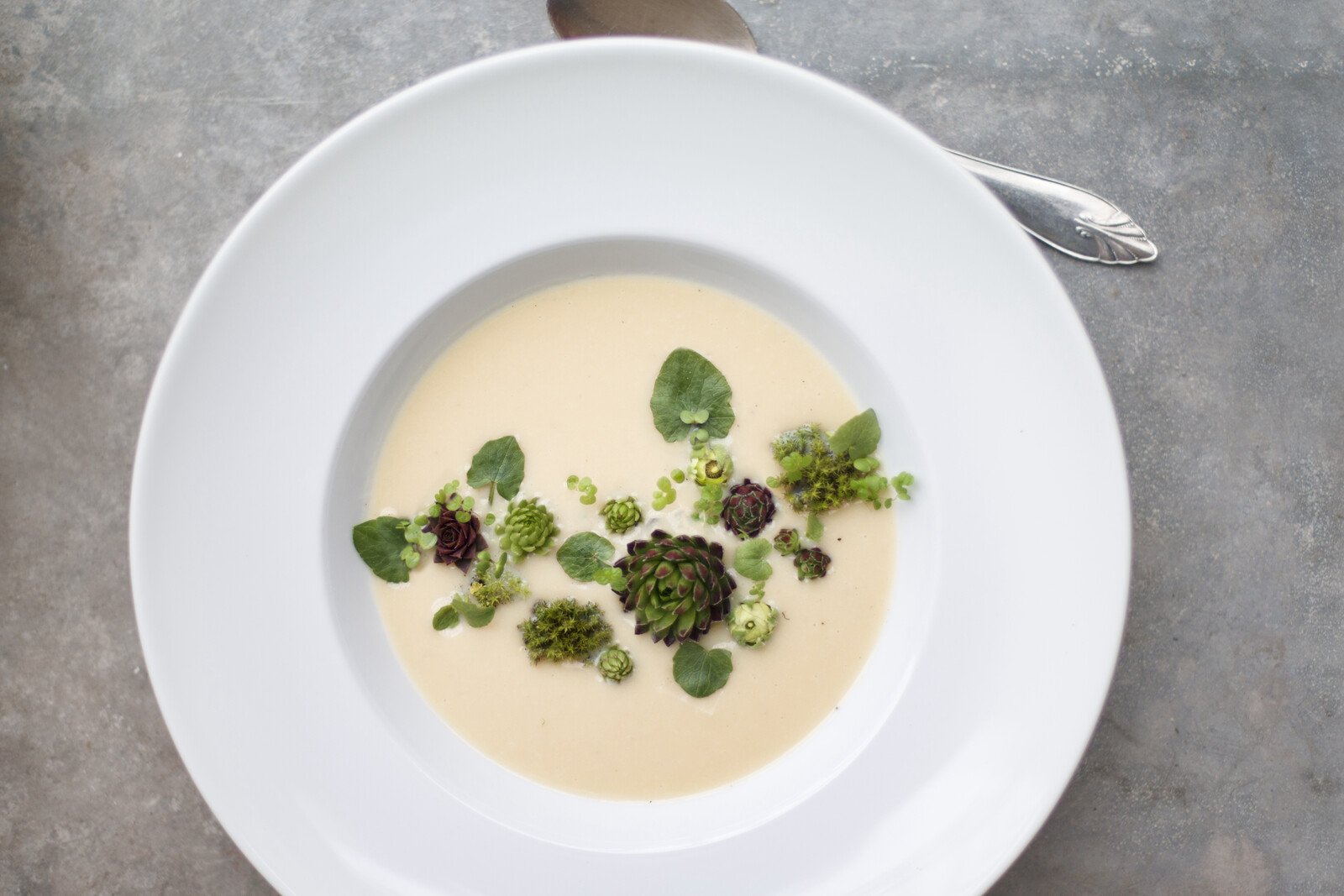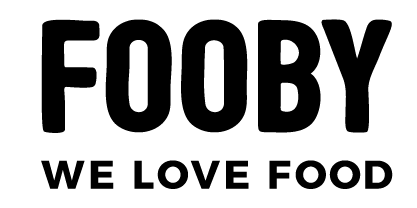"Trends change more than laws"
Maurice Maggi is a trained landscape gardener and cook. He wants to give nature back its place in the city of Zurich and raise awareness among city dwellers of how important it is for us. Nature creates meeting places and helps us to live more locally. Maggi became famous 40 years ago with his flower graffiti: he started scattering seeds of wild flowers and herbs to green the city. The "jöh Blüemli" comments became a movement. Today, there are more and more initiatives by private individuals in Zurich who put up flower boxes in the middle of cafés or even plant trees. So time has proved him right, and yet there are still a few things that make Maurice Maggi ugly.
Where are the good places in Zurich to find edible plants?
Near school buildings and in cemeteries, where dogs are not allowed. You should rather avoid the plants directly by the road, because the dogs urinate there. But dog urine is not that bad compared to what people usually eat.
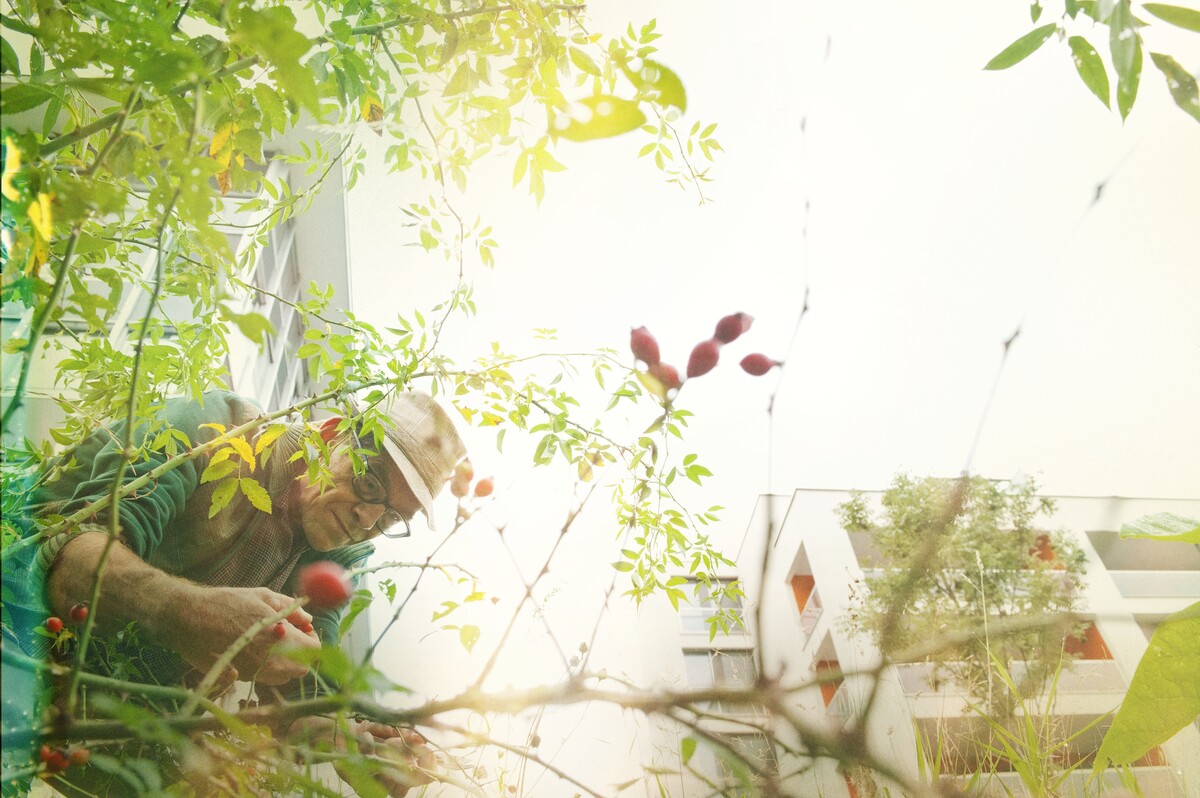
What do you mean?
We eat a lettuce from the supermarket without hesitation, which is sprayed several times with poison in the greenhouse. But with dog urine we think: Yuck, we don't want that. When you decide for yourself what you eat, you suddenly question a lot more.
You consume more consciously what you grow yourself. Why is that?
Herbs and tomatoes that you grow on your own balcony taste much better. The experience plays a role. In cities, it's almost part of the experience to plant something on your balcony or windowsill. I recommend starting with kitchen herbs, which you can enjoy all year round.
What other edible plants do city dwellers like?
When I look around on social media, it's definitely wild garlic (laughs). I have seen pictures of people who have collected 1.5 kg of it. I hope they shared that with their fellow human beings....
We all know wild garlic and basil. What grows in our city that we mostly overlook?
Dandelions, elderberries, lime blossoms on the Joseph meadow, wild fruits on the banks of the Limmat, ribwort plantain or rock pear. I usually focus on one plant and then walk through the city with this radar. Suddenly I see only rock pears everywhere, which by the way taste excellent.
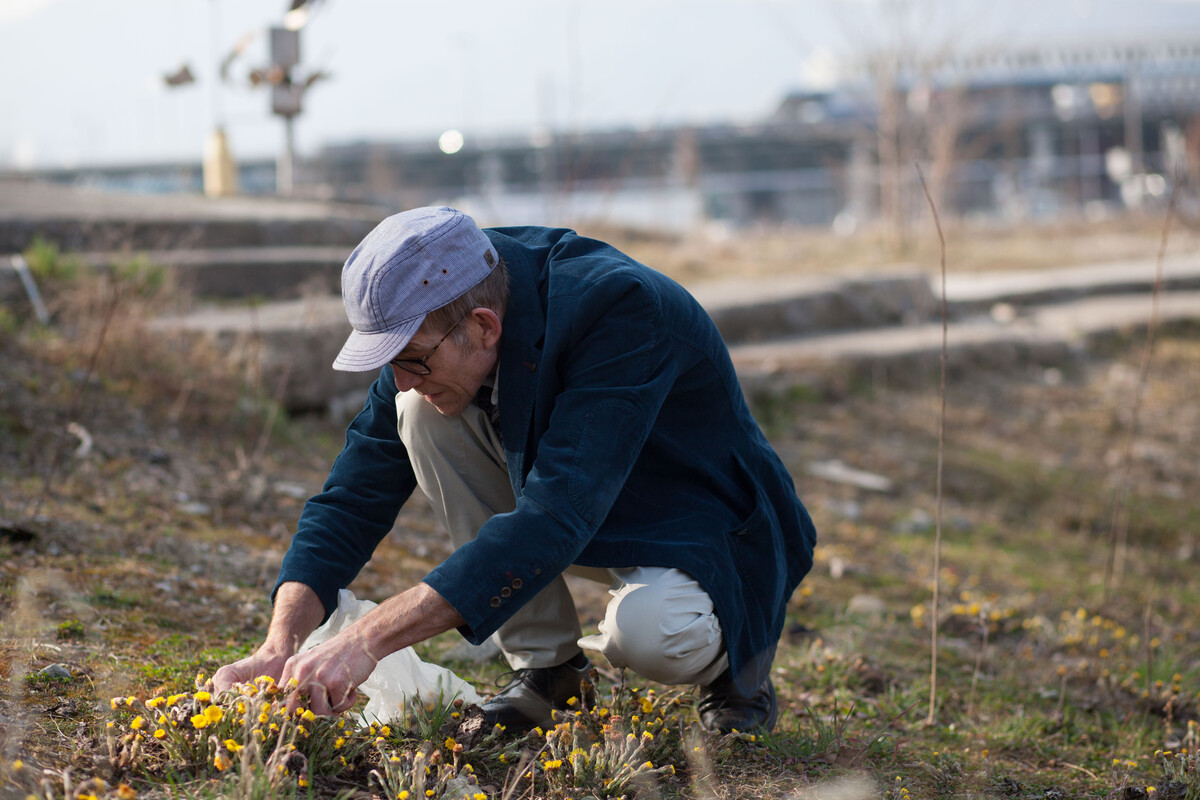
What can beginners start with?
With something they recognise well. Stinging nettle, for example. Then they cook something with it and hopefully realise how versatile this plant is. And then suddenly the focus is open to other edible plants that grow around us.
Do restaurateurs also work with wild plants?
Wild herbs have taken the place of the new exotics in high-end gastronomy. With the modern consciousness of today's people, you can no longer show off with a giant shrimp in the menu. But with a Pro-Specie-Rara vegetable, you can.
So growing and enjoying locally is becoming more and more important?
Many restaurateurs around the world have committed themselves to cooking only with plants and food within a radius of 100 km, for example the Swiss chef Daniel Humm in New York. Zurich restaurants that work locally, for example, are the Equitable, Mesa, Rechberg or Gamper.
Would it make sense if we all ate so locally?
It would work well in our latitudes. We wouldn't have olive oil or certain spices, but there would be great alternatives like poppy seed oil, which would be local, or nut oil, linseed oil, hemp oil. These products are still rather expensive because the work is not yet industrialised and a lot of manual labour is involved.
Do you have an example?
Some Swiss farmers are going back to buckwheat. It is a fast crop and used to be grown in the fields often after wheat or rye. It is not considered a staple food anywhere, but is nevertheless present in many countries' cuisines. In France in galette, in Asia in soba noodles and with us in pizokels. Since buckwheat is gluten-free, it is currently experiencing a boom and is becoming interesting for farmers. However, a special machine is needed to shell the buckwheat nuts, and that is expensive. Some Swiss farmers have now joined forces and are jointly financing this machine.
How local should our food be?
It makes sense if we honestly eat locally. But not locally, as the major distributors do, who first drive the lettuce from Thurgau to Bern and pack it there before it reaches the shelves in Zurich. The most important thing about growing and eating locally is that we reduce mobility.
Why is that necessary?
Mobility is the downfall of human beings. If you jet off to New York, London or Singapore at the weekend, you ruin a lot of things. The global goal that many cities are currently striving for is that people can get everything they need for a good life within seven minutes' walk: All basic foodstuffs, leisure time, medical care. In Paris, the whole city is being rebuilt with this in mind.
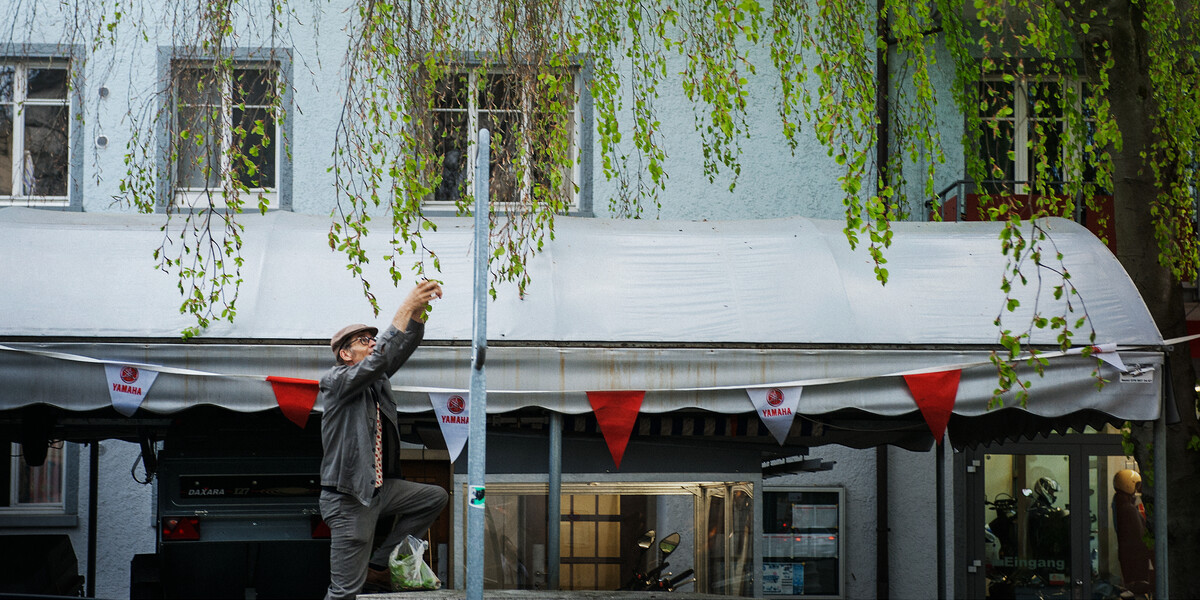
What exactly happens there?
Thanks to the centralised system, the politicians can really speed things up. They have made huge boulevards along the Seine car-free, where people now picnic or tango, they promote market halls and plant markets in the neighbourhoods. This is the vision of the future, that we bring rural life into the cities. By 2050, 80 percent of the world's population will live in cities. We have to design the big cities in such a way that we can live well in them. Unfortunately, Switzerland and Zurich are lagging behind in this respect.
We have quite a lot of green spaces here, don't we?
We have a lot of forest around the city, that's why the city says we don't need any additional green spaces in the centre. But if everyone drives to the Buchegg forest at the weekend or flies to Thailand on holiday to relax in nature from our everyday city life, then that's a problem.
Are there also good examples of urban planning in Zurich?
Between Idaplatz and Bullingerplatz we have four meeting places that are very busy. But in Zurich everything happens slowly. Like many other cities, we could have used the Corona crisis to make room for cyclists. It worked in Brussels, Vienna, London, but not in Zurich. Maybe it's a disease of affluence that everything is moving so slowly here.
During our conversation at Café Bonheur, a woman next to us is harvesting nettles from a raised bed between the bistro tables and planting new ones.
Why are there plant boxes in the middle of the café?
On their own initiative, the residents of the neighbourhood put up boxes on Bullingerplatz and planted them. The city council then donated some pallets. The square was a winner. Now imagine if it were a gravel square where more could grow and there were a few trees around the fountain?
And why are there no trees here?
The municipal building plans are designed for 20 years. Changes have a hard time... besides, good things and ideas need some care. Often people don't want to invest that.
You have been planting Zurich's streets and squares on your own initiative for 40 years. Do people hear and see you?
I'm well represented in the media, I'm often given interviews or guided tours of the city. I can make my ideas known and that has an effect. The feedback I get from people shows that. If I can take these issues to the neighbourhoods, I'm happy. If it's not just me shouting, but many people, maybe something will change.
What are you shouting for?
That the city should not cut off everything around the trees from 15 June onwards, but let the flowers go to seed. The wild bees and butterflies won't find any food and will starve to death. And it would look even more beautiful.
How can you make a difference with your work?
For example, I teach at three architecture chairs at ETH. I walk through the city with future architects, and we look at what is good and what is not. And that's what they remember later when they plan a building. On the inside you think advanced, for example when you build to the Minergie standard. But on the outside, things often look different.
Do you have an example?
In the bonded warehouse there is a 15-metre-wide paved access road to the area, but you are not allowed to drive into it. Now they have put up additional pillars. It would be much easier to plant a lawn or a garden there, because no one would think of driving over one. Or in the Green City, for example, all the roads are blocked off, nothing can grow there. I ask myself, what is the experience of a child growing up there between walls and concrete?
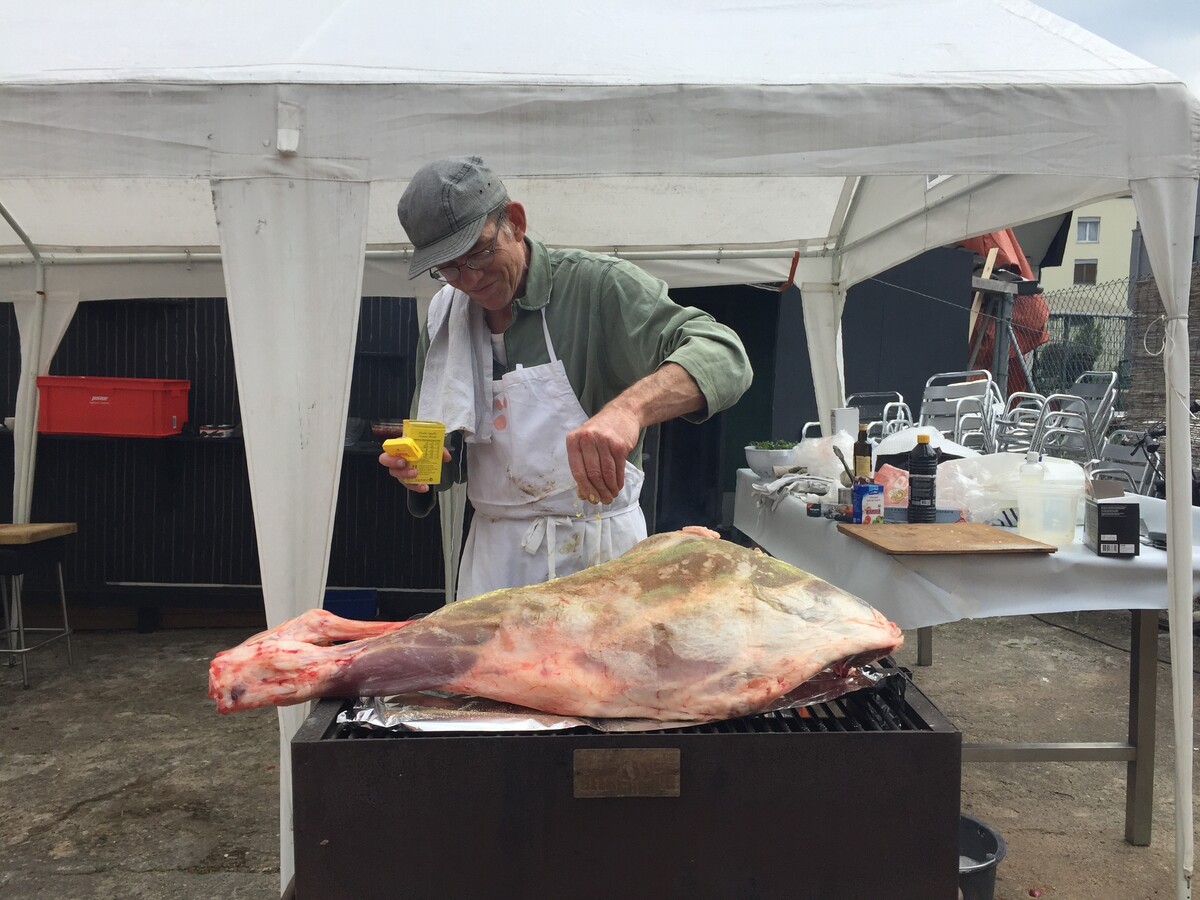
Is there also an example of children growing up greener?
Children living in the ABZ cooperative on Bullingerplatz have been longing for chickens. The building cooperative then put a chicken coop in the courtyard. Of course, that doesn't cover the need for eggs, but it's about something else.
What is it about?
This way, the children experience vegetation that is close to nature. My vision is that children - also in the city - can fill their bellies with raspberries on the way to school, that there are more chicken coops on house roofs and spice plants as ground cover - that already has a meaning for the city dwellers. 40 years ago, nothing could be grown in the city. People lived a much more secluded life.
How has that changed?
In the 70s, the Italian guest workers came and brought "Italianità" to Zurich. In 1970, there were only four restaurants in the city that had outdoor seating! At that time, only Italians stood outside on the squares and talked or played. Until then, the people of Zurich only ventured out into public spaces for a walk and at most sat on a bench - if it was free (laughs).
And that has changed?
Yes, this new mentality has become fashionable and has also spread to the established people. Today you could go much further. For example, if you put a basketball hoop on a square, people automatically move around a lot more. But instead we still give so much space to private traffic. These are still conditions as they were in the post-war era.
Has Corona changed anything in this way of thinking?
The last one and a half years have accelerated things. We have realised what is system-relevant. And we were no longer allowed to move in the way we were used to. As a city, you have to react: You have to be able to reach everything on foot if we are to use less public transport because of the virus. In concrete terms, we could create areas for neighbourhood shops. These supply the residents with healthy basic foodstuffs, but also have a social function. The father can then say to the child: Wait for me in front of the shop after school. See you there.
Do you have an example of such a neighbourhood shop?
The POT in the Rotach Triemli building cooperative has had such a shop since January 2020, which is supplied with Demeter vegetables by Gut Rheinau. Members pay a monthly fee and can shop there day and night via app and on site. This eliminates the margin that the major distributors otherwise earn and makes good vegetables much cheaper for consumers.
But shop space in Zurich is expensive. How can neighbourhood shops afford it?
Building cooperatives should subsidise the construction. Such shops should be as much a part of basic needs as a lift or underground parking and should be included in the rent right from the start. We should rethink - already during construction. Housing estates are so important for us to be able to live locally. I am very pleased that we are currently receiving many enquiries from building cooperatives that are interested in these issues.
How should our living together change?
To achieve our desired goal of a 2000-watt society, we should stop thinking individually and live in a much more networked way. Not everyone has to have a guest room. In cooperatives, people share one that their mother-in-law can use when she comes over. Densified living is a big and important issue, but family gardens must not be allowed to die for the construction of school buildings. Obviously, you are always surprised when you build housing estates with 500 flats and then families with children actually come (laughs). And then you realise: "Oops, we still need school buildings."
Locality - where is that already an issue everywhere today?
In gastronomy, as I said, it is already very present. People know where the sow or the celery comes from and drink natural wines from the region. Recently I was asked by a large insurance company to show the employees what grows around their office building that they can eat. A lot of things are going back to the original, even if it's probably due to a trend. But fashion movements are always better vehicles for change than laws.
The waiter serves a homemade iced tea with rooibos.
Rooibos grows in South Africa. So not really local... what would be a good alternative?
Lime blossom or elderflower. In the 60s, we in Zurich were self-sufficient in lime blossom. The newspapers back then even called on readers to borrow ladders and pick the lime blossoms. But the drops from the trees at that time made the cars too sticky, so the trees were cut down and chestnuts were grown instead. But only the barren ones, so that no horse chestnuts would fall on the cars....
And it's still the same today?
Yes, we subordinate everything to private traffic. Just like after the war, when the car became a status symbol and demonstrated our wealth. What really upsets me is that this way of thinking is so outdated today. After all, we no longer work with a fax machine! We are so advanced in communication and other areas, but unfortunately not at all in urban planning or greening the city. We can only hope for fashion.
Fashion is supposed to save us?
One example is veganism: less than 1% of the population in Switzerland actually eats a vegan diet. But vegan products are currently getting an enormous amount of attention. Every restaurant now has a vegan menu on the menu. We have to reduce our meat consumption enormously and I believe that we achieve more with fads than with laws. BBC once showed an exciting series showing London in 2050. Everyone there eats a vegan diet and it's considered absolutely normal. Only the old incorrigibles meet underground for illegal meat parties... (laughs).
How do you eat?
I've been eating seasonally for 40 years. In May I have asparagus three or four times a week, then I have enough for a year. The berries in summer are amazing and the tomatoes in August are very fine. Each season offers us so much and I'm happy about the change. I'm happy that preserving and fermenting have also become a big trend. But food has also become political.
Today, we actually delight our guests more with a jar of pickled courgettes or dandelion buds than with an exotic dish. Why is that?
Today, tell me what you eat and I'll tell you who you are. Our urban society is shaping trends and they are going back to the local. People are slowly becoming aware of how cruelly we are fishing out our sea and are therefore choosing sea fish from the region again.
But good food is expensive, many say.
A farmer earns 14 francs an hour. That is too little for many. The next generation would be here, but many can't even support their families that way. On average, a Swiss family spends 7% of the household budget on food. If that were only 8%, we could pay the farmers a more decent wage. After the Second World War, 40% was spent on food. Today, everyone can afford organic food! Then you buy one less T-shirt per month. But fashion is more important to many than sustainably produced food.
Finally: What are your favourite moments when you walk through Zurich?
I once planted pak choi in front of the Coop near Lochergut. I like to watch the surprised faces of people who have just bought it in plastic in the shop and then see it for free in the bed in front of them. Or the children who walk through the streets with their parents and discover a pumpkin and then discuss with their families whether it should be eaten.
Book tip: "Essbare Stadt" by Maurice Maggi, AT Verlag, 2014.
Info Box
3 Sachen, die in Zürich wachsen und die du gut verwenden kannst:
Brennnessel: Man kann die frischen Triebe im frühen Mai ernten und roh essen (zuvor mit dem Wallholz darüberrollen). Die Blätter kann man bis im Herbst ernten und wie Spinat verwenden: Zum Beispiel kurz im Pastawasser blanchieren und zur Pasta geben oder mit etwas Knoblauch und Zwiebeln anbraten und in einer Quiche backen. Brennnessel fällt nicht so zusammen wie Spinat und sättigt. Als Tee wirkt die Brennnessel zudem entwässernd. Die Samen sind ein gutes Stärkungsmittel für Frauen und Männer.
Schlüsselblumen: Die Blüten und Blätter waschen – letztere eventuell zerkleinern – und als Salat geniessen. Das Zweierlei sieht schön aus und schmeckt nach Frühling auf dem Teller.
Löwenzahn: Die jungen Blätter schmecken roh gut im Salat. Man kann sie auch zu Pesto verarbeiten, in einer Frühlingssuppe mitkochen oder als Tee aufgiessen. Die Blütenknospen kann man geschlossen einlegen und wie Kapern zum Apéro geniessen oder süss die gelben Blüten aufkochen und daraus eine Art pflanzlicher Honig gewinnen.

